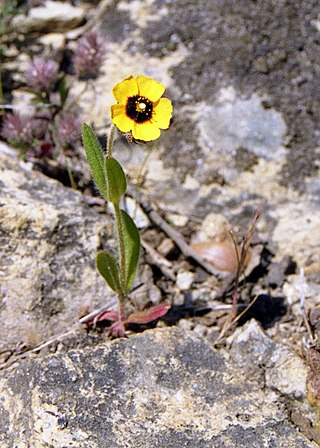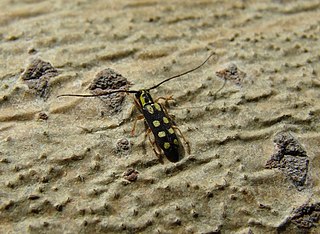
The corn snake, sometimes called red rat snake is a species of North American rat snake in the family Colubridae. The species subdues its small prey by constriction. It is found throughout the southeastern and central United States. Though superficially resembling the venomous copperhead and often killed as a result of this mistaken identity, the corn snake lacks functional venom and is harmless. The corn snake is beneficial to humans because it helps to control populations of wild rodent pests that damage crops and spread disease.

Cattleya is a genus of orchids from Costa Rica south to Argentina. The genus is abbreviated C in trade journals.

The spotted turtle, the only species of the genus Clemmys, is a small, semi-aquatic turtle that reaches a carapace length of 8–12 cm (3.1–4.7 in) upon adulthood. Their broad, smooth, low dark-colored upper shell, or carapace, ranges in its exact colour from black to a bluish black with a number of tiny yellow round spots. The spotting patterning extends from the head, to the neck and out onto the limbs. Sexually mature males have a concave plastron and a long, thick tail. By contrast, sexually mature females possess a flat plastron and have a tail that is noticeably shorter and thinner than that of mature males. Mature males also have a dark iris and face; females typically have a yellow or orange iris and a similarly coloured face that is distinctly lighter than the males'. Juveniles appear female-like in this regard, and at maturity males begin to develop darker features.

Erythranthe guttata, with the common names seep monkeyflower and common yellow monkeyflower, is a yellow bee-pollinated annual or perennial plant. It was formerly known as Mimulus guttatus.

Tuberaria guttata, the spotted rock-rose or annual rock-rose, is an annual plant of the Mediterranean region which also occurs very locally in Wales and Ireland. The flowers are very variable with the characteristic spot at the base of the petal very variable in size and intensity of colour.

The diamond firetail is a species of estrildid finch that is endemic to Australia. It has a patchy distribution and generally occupies drier forests and grassy woodlands west of the Great Dividing Range from South East Queensland to the Eyre Peninsula in South Australia. While it is a small stocky bird it is one of the largest finches in Australia. The birds are very distinctive with a black breast-band on a white breast. The flanks are black with white spots and it has a scarlet rump and a black tail.

The western bowerbird is a species of bird in the family Ptilonorhynchidae. The species is a common endemic of Australia. It has a disjunct distribution, occurring in Central Australia and the Pilbara region of Western Australia.

Saperdini is a tribe of longhorn beetles of the subfamily Lamiinae.

Menesia is a genus of longhorn beetles of the subfamily Lamiinae, containing the following species:
Menesia bimaculata is a species of beetle in the family Cerambycidae. It was described by Stephan von Breuning in 1954. It is known from Borneo.
Menesia burmanensis is a species of beetle in the family Cerambycidae. It was described by Stephan von Breuning in 1954.
Menesia nigriceps is a species of beetle in the family Cerambycidae. It was described by Per Olof Christopher Aurivillius in 1903. It contains the varietas Menesia nigriceps var. inhumeralis.
Menesia nigricornis is a species of beetle in the family Cerambycidae. It was described by Per Olof Christopher Aurivillius in 1913. It is known from Borneo.
Menesia walshae is a species of beetle in the family Cerambycidae. It was described by Stephan von Breuning in 1960. It is known from Java.

Menesia bipunctata is a species of beetle in the family Cerambycidae. It was described by Zoubkov in 1829, originally under the genus Saperda. It has a wide distribution in Europe and Asia. It measures between 6 and 9 mm. It feeds on Juglans regia and Frangula alnus.

Menesia sulphurata is a species of beetle in the family Cerambycidae. It was described by Gebler in 1825, originally under the genus Saperda. It is known from Mongolia, Kazakhstan, Japan, China, and Russia.
Menesia transversenotata is a species of beetle in the family Cerambycidae. It was described by Heller in 1924. It is known from the Philippines.
Allison's emo skink is a species of lizard in the family Scincidae. It is found in Papua New Guinea.

The zebra finches are two species of estrildid finch in the genus Taeniopygia found in Australia and Indonesia. They are seed-eaters that travel in large flocks.

The Sunda zebra finch is a species of bird in the family Estrildidae. It is found in the Lesser Sundas.











